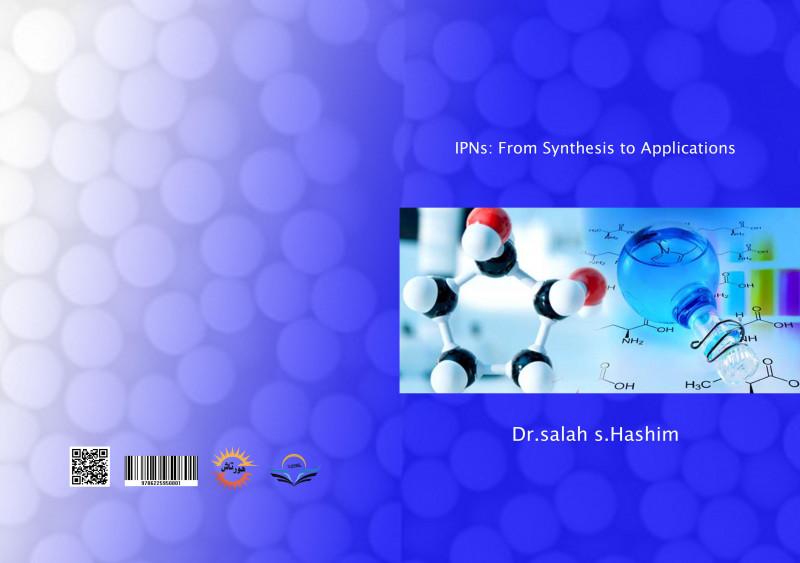کتاب IPNs: From Synthesis to Applications
- صفحه نخست
- رشته ها
- - فنی و مهندسی
- پلیمر
- کتاب IPNs: From Synthesis to Applications
فهرست
Preface 6
CHAPTER ONE 9
Introduction to Interpenetrating Polymer Networks 9
CHAPTER TWO 19
Synthesis and Characterization of IPNs 19
CHAPTER THREE 25
Mechanical Properties of Interpenetrating Polymer Networks 25
CHAPTER FORE 29
Thermal and Chemical Properties of IPNs 29
CHAPTER FIVE 33
Electrical and Optical Properties of Interpenetrating Polymer Networks 33
CHAPTER SIX 37
Biomedical Applications of IPNs 37
CHAPTER SEVEN 43
CHAPTER EIGHT 47
IPNs in Coatings, Adhesives, and Composites 47
CHAPTER NINE 49
CHAPTER TEN 51
Future Directions and Emerging Research in IPNs 51
References 137
Synthesis and Characterization of IPNs
The synthesis of interpenetrating polymer networks (IPNs) can be achieved through a variety of methods, including simultaneous polymerization,sequential polymerization, and physical entanglement. Here are some examples of IPN synthesis methods and their applications:
Simultaneous polymerization: This method involves mixing monomers from different polymer systems and initiating polymerization simultaneously. The resulting IPN is a mixture of the two polymer networks that are interlocked with each other. For example, a simultaneous polymerization of polyethylene (PE) and polypropylene (PP) results in a PE/PP IPN. The simultaneous polymerization method has also been used to synthesize IPNs of poly(ethylene terephthalate) and polyurethane, which have potential applications as adhesives and coatings.
Sequential polymerization: This method involves polymerizing the first polymer network and then introducing the monomers of the second polymer system, allowing them to polymerize and interpenetrate with the first network. Sequential polymerization can produce IPNs with distinct layers or regions. For example, a sequential polymerization of poly(acrylic acid) and poly(vinyl alcohol) results in a IPN with distinct hydrophilic and hydrophobic regions. Sequential polymerization has also been used to synthesize IPNs of poly(ethylene glycol) and poly(ε-caprolactone) for biomedical applications.
Physical entanglement: This method involves mixing pre-formed polymer networks in a solution, which leads to the physical entanglement of the two networks. This method is simple and easy to implement, but it may not result in the most effective IPN structures. For example, physical entanglement has been used to synthesize IPNs of poly(vinyl alcohol) and poly(vinyl acetate), which can be used as pH-sensitive hydrogels.
Advanced synthesis techniques: Recent advances in IPN synthesis have included the use of techniques such as electrospinning, 3D printing, and self-assembly. For example, electrospinning has been used to synthesize IPNs of poly(lactic acid) and poly(caprolactone) with tunable mechanical properties for tissue engineering applications. 3D printing has been used to synthesize IPNs of polyurethane and poly(acrylic acid) for the production of smart drug delivery devices. Self-assembly has been used to synthesize IPNs of poly(acrylonitrile) and graphene oxide, which exhibit improved mechanical properties and electrical conductivity.
Joint interpenetrating polymer networks (JIPNs) are hybrid materials composed of two or more IPNs that are interconnected at the molecular level. JIPNs are created by allowing two or more pre-formed IPNs to interpenetrate with each other, resulting in a three-dimensional network structure. The interpenetration of two or more IPNs can lead to the development of materials with unique properties and applications.
The synthesis of JIPNs involves the formation of two or more separate IPNs using any of the methods mentioned earlier. The IPNs are then brought into contact with each other under conditions that promote interpenetration. The conditions required for interpenetration will depend on the specific IPNs used and their individual properties. In general, interpenetration occurs when there is sufficient compatibility between the IPNs, which allows for diffusion of one polymer network into the other.
The interpenetration of two or more IPNs can result in materials with enhanced mechanical and chemical properties. For example, JIPNs can exhibit improved toughness, increased resistance to chemical attack, and improved adhesion to substrates. JIPNs can also be used to create materials with unique properties, such as responsive materials that change their properties in response to external stimuli.
One example of a JIPN is a composite material composed of an epoxy network and a polyurethane network. The epoxy network provides stiffness and dimensional stability, while the polyurethane network provides toughness and flexibility. The interpenetration of these two networks can lead to the development of a material with improved properties such as increased impact resistance and improved adhesion.
Another example of a JIPN is a material composed of a silicone network and a polyethylene oxide network. The interpenetration of these two networks can lead to the development of a material with unique properties such as high gas permeability, which can be useful in applications such as gas separation membranes.
Overall, the synthesis of IPNs has evolved over time, with a range of different methods available for creating interlocked polymer networks. The method used depends on the specific polymer systems involved and the intended application of the resulting IPN. joint interpenetrating polymer networks offer the potential to create materials with enhanced properties and new functionalities. The synthesis of JIPNs can be achieved through the interpenetration of pre-formed IPNs, and the specific conditions required for interpenetration will depend on the properties of the individual IPNs used. Further research in JIPNs is likely to lead to the development of materials with even more enhanced properties and new applications
| تعداد صفحات | 143 |
|---|---|
| شابک | 978-622-5950-80-1 |






